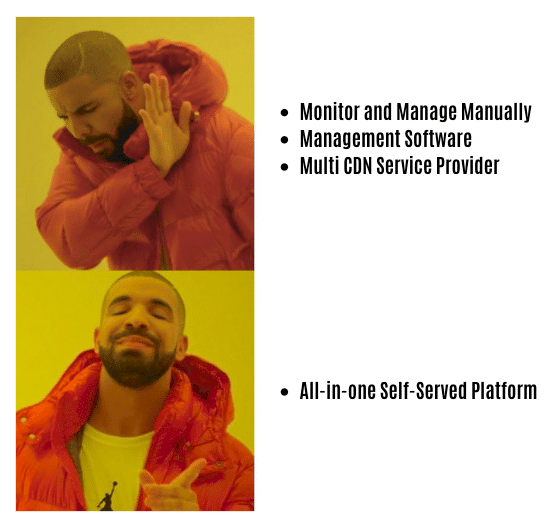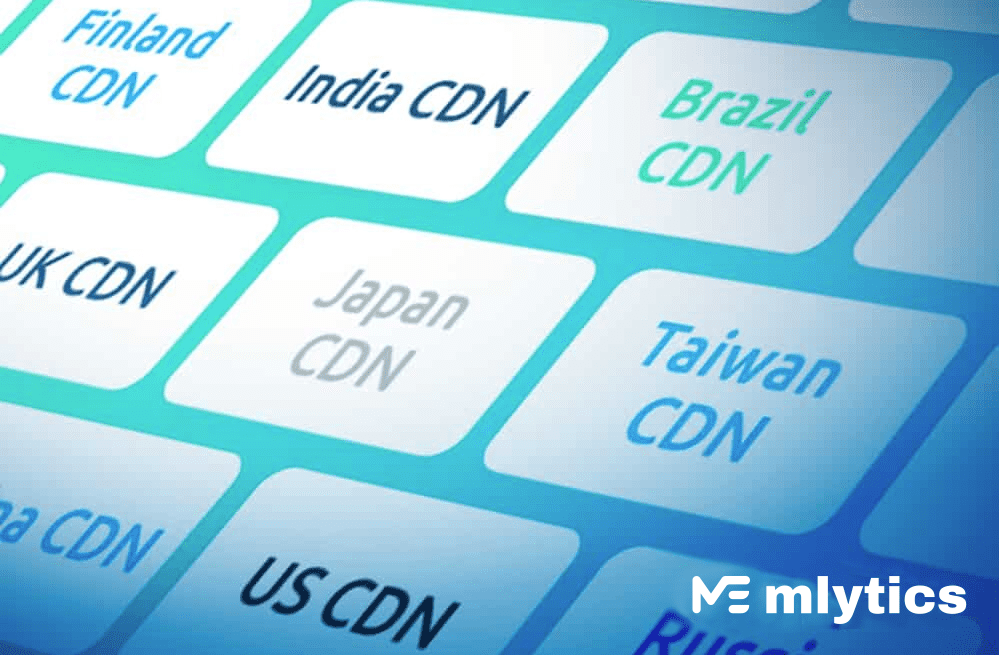A good analogy for a reason behind a CDN is a fast food franchise. Deploying smaller computer servers in multiple locations is similar to the reason why your favorite fast food spot has locations all over the place. By creating numerous access points instead of one large restaurant, people from all over can go to their favorite site and get the same burgers and fries they would get from a central location with less travel and quicker service. Of course, when choosing a CDN, you are not likely to be asked if you’d like fries with your order.
The explosion of demand for digital content and web-based applications increased the demand for an efficient way to deliver that content; as a result, CDNs are now a significant part of any serious network infrastructure. According to a recent report by Cisco, a whopping 70 percent of all Internet traffic will cross CDNs by 2021. Customers not only want high-quality performance at soaring speeds, but they expect it regardless of the technological challenges and complexities involved.
| CDN Traffic, 2016–2021 | 2016 | 2017 | 2018 | 2019 | 2020 | 2021 | CAGR
2016–2021 |
| By Geography (PB per Month) | |||||||
| North America | 17,696 | 24,545 | 32,795 | 42,976 | 53,141 | 63,519 | 38% |
| Asia Pacific | 10,259 | 14,715 | 20,416 | 28,415 | 38,831 | 55,306 | 53% |
| Western Europe | 7,155 | 9,869 | 13,035 | 17,049 | 21,750 | 27,760 | 40% |
| Central and Eastern Europe | 1,589 | 2,257 | 3,025 | 4,093 | 5,565 | 7,650 | 50% |
| Latin America | 1,245 | 1,799 | 2,453 | 3,226 | 4,414 | 6,569 | 52% |
| Middle East and Africa | 396 | 702 | 1,168 | 1,877 | 3,092 | 4,848 | 84% |
| Total (PB per Month) | |||||||
| CDN Internet traffic | 38,340 | 53,888 | 72,893 | 97,636 | 126,793 | 165,651 | 44% |
Source: Cisco VNI, 2017
The desire to stay ahead of the game has led many organizations to deploy multiple CDNs to improve local performance, allow load-sharing among servers, and create redundancies to protect their data. In theory, a Multi CDN approach sounds simple. By using more than one CDN, end-user needs are met by the optimal CDN for the task, resulting in better website performance through increased website speed.
Do I need Multi CDN?

The actual implementation of a Multi CDN strategy requires abundant research and evaluation in order to succeed. Here are some of the questions you will need to answer before deciding as to whether a Multi CDN is right for your organization:
- What is the size and location of your audience?
- Do you need to dramatically increase website speed for your end-users?
- Are you experiencing traffic spikes or excess usage that could be addressed by load-sharing with another server via global server load balancing?
- How will an outage impact your business?
- Do you have a plan in place to determine how you will manage traffic among multiple CDNs?
- Does your organization lack the time and know-how to manage manual DNS approaches and make adjustments as needed?
- How does your business measure success regarding network performance metrics?
- Does the potential Multi CDN solution include the metrics you need to gauge performance?
Finding the right CDNs
Once you have clear answers to the questions above, your next task is to find the proper CDN partner for your needs. Because CDN providers are not all created equal, be sure to consider these factors:
- Does the CDN operate in the geographic locations where I need coverage to reach my end users?
- Are you planning on expanding into a market that the CDN already covers?
- What performance metrics are essential to your customers?
- How will you be able to measure performance among different CDN vendors? Will you use their unreliable simulation models or will you test the actual performance on your network via a trial run?
- What kind of customer service and tech support is available? Is it included in your plan or will you be surcharged? Those costs add up quickly.
- Does the CDN vendor have a contingency plan in case of a massive network disruption?
- How much storage will the CDN solution provide to move between the various CDNs, and how will you manage that storage?
- Does the CDN vendor provide an integrated solution or will you need to engage outside vendors for specific needs?
We have an article to help you find the best CDN provider, read more here.
Actually switching
Once all of these questions have been asked and answered to your satisfaction, the final step is executing the switch to a Multi CDN. If cost is a serious constraint, you can implement the new setup manually and monitor everything internally without any management software or assistance. Of course, this system can lead to problems along the way, as well as the potential for missing tweaks and improvements from someone with more experience with Multi CDNs.
Or you can use a dedicated Multi CDN service provider who can assist you with selecting CDN providers and distributing your traffic for you. The downside of this approach includes the need for lengthy preparations for implementation and onboarding. Additionally, you lose the ability to make essential choices by allowing the provider to do as they please- a process that will likely lack the transparency you will want.
A new way to deploy Multi CDN under 5 Minutes
After all of the discussion about the pitfalls of deploying a Multi CDN, the thought of implementing one in under five minutes sounds crazy, right? Despite searching for an easier and faster way to solve this problem, no providers provide the total package capable of lowering the threshold to a more controllable and flexible Multi CDN solution.

So we decided to build a platform that can truly let you select and deploy Multi CDN in under five minutes. And in just five more minutes, you can use the platform to set up and enforce a comprehensive network security policy across all of the CDNs included in your Multi CDN, and also activate the web application firewall (WAF) to protect your domain from the most common cyber threats.
You may be wondering how it is possible to deploy Multi CDN under 5 minutes if you have to negotiate and sign a contract with all these selected CDN providers. The answer is simple- you don’t. Mlytics has already negotiated and signed contracts with all the CDN providers and is API fully connected. All you have to do is hop on board and ride along with us.



